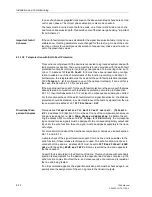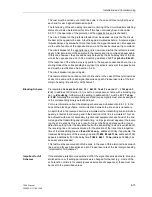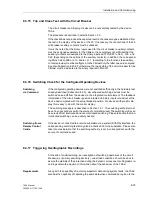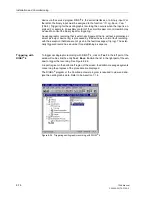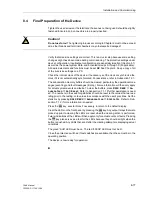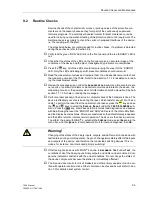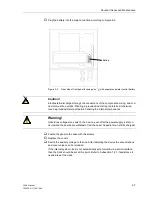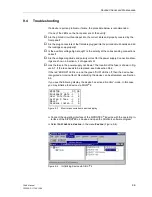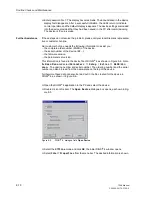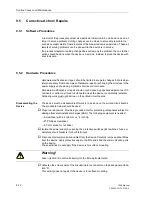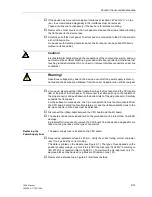
Installation and Commissioning
8-77
7SA6 Manual
C53000-G1176-C156-2
8.4
Final Preparation of the Device
Tighten the used screws at the terminals; those ones not being used should be slightly
fastened. Ensure all pin connectors are properly inserted.
Verify that all service settings are correct. This is a crucial step because some setting
changes might have been made during commissioning. The protective settings under
device configuration, input/output configuration are especially important (Section 5.1)
as well as the power system data, and activated Groups A through D (if applicable).
All desired elements and functions must be set
ON
. See Chapter 6. Keep a copy of all
of the in-service settings on a PC.
Check the internal clock of the device. If necessary, set the clock or synchronize the
clock if it is not automatically synchronized. For assistance, refer to Subsection 7.2.1.
The annunciation memory buffers should be cleared, particularly the operational mes-
sages (event log) and fault messages (trip log). Future information will then only apply
for actual system events and faults. To clear the buffers, press
MAIN MENU
→
An-
nunciation
→
Set/Reset
. Refer to Subsection 7.1.1 if further assistance is need-
ed. The numbers in the switching statistics should be reset to the values that were ex-
isting prior to the testing, or to values in accordance with the user's practices. Set the
statistics by pressing
MAIN MENU
→
Annunciation
→
Statistic
. Refer to Sub-
section 7.1.2 if more information is needed.
Press the
key, several times if necessary, to return to the default display.
Clear the LEDs on the front panel by pressing the
key. Any output relays that were
picked up prior to clearing the LEDs are reset when the clearing action is performed.
Future indications of the LEDs will then apply only for actual events or faults. Pressing
the
key also serves as a test for the LEDs because they should all light when the
button is pushed. Any LEDs that are lit after the clearing attempt are displaying actual
conditions.
The green “
RUN
” LED must be on. The red “
ERROR
” LED must not be lit.
Close the protective switches. If test switches are available, then these must be in the
operating position.
The device is now ready for operation.
n
Caution!
Do not use force!
The tightening torques according to Chapter 2 must not be exceed-
ed as the threads and terminal chambers may otherwise be damaged!
ESC
LED
LED
Summary of Contents for siprotec 7SA6
Page 2: ...Siemens Aktiengesellschaft Book No C53000 G1176 C156 2 ...
Page 18: ...xviii 7SA6 Manual C53000 G1176 C156 2 ...
Page 32: ...Introduction 1 14 7SA6 Manual C53000 G1176 C156 2 ...
Page 82: ...Hardware and Connections 2 50 7SA6 Manual C53000 G1176 C156 2 ...
Page 119: ...SIPROTEC 4 Devices 4 25 7SA6 Manual C53000 G1176 C156 2 Figure 4 20 CFC Logic example ...
Page 190: ...Configuration 5 62 7SA6 Manual C53000 G1176 C156 2 ...
Page 652: ...Installation and Commissioning 8 78 7SA6 Manual C53000 G1176 C156 2 ...
Page 724: ...Technical Data 10 56 7SA6 Manual C53000 G1176 C156 ...
Page 800: ...Appendix A 76 7SA6 Manual C53000 G1176 C156 2 ...
Page 866: ...Appendix B 66 7SA6 Manual C53000 G1176 C156 2 ...










